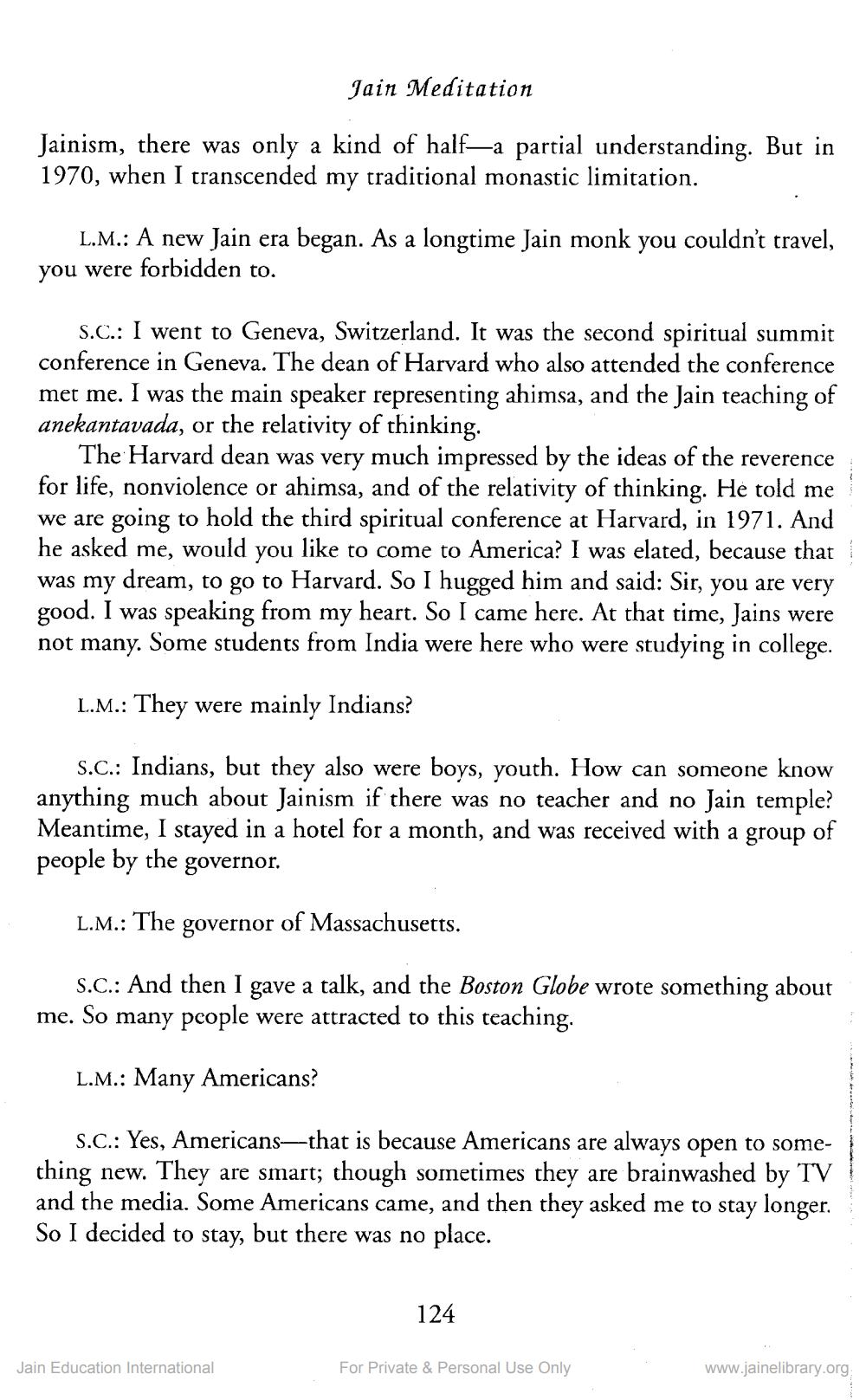________________
Jain Meditation
Jainism, there was only a kind of half-a partial understanding. But in 1970, when I transcended my traditional monastic limitation.
L.M.: A new Jain era began. As a longtime Jain monk you couldn't travel, you were forbidden to.
S.C.: I went to Geneva, Switzerland. It was the second spiritual summit conference in Geneva. The dean of Harvard who also attended the conference met me. I was the main speaker representing ahimsa, and the Jain teaching of anekantavada, or the relativity of thinking.
The Harvard dean was very much impressed by the ideas of the reverence for life, nonviolence or ahimsa, and of the relativity of thinking. He told me we are going to hold the third spiritual conference at Harvard, in 1971. And he asked me, would you like to come to America? I was elated, because that was my dream, to go to Harvard. So I hugged him and said: Sir, you are very good. I was speaking from my heart. So I came here. At that time, Jains were not many. Some students from India were here who were studying in college.
L.M.: They were mainly Indians?
S.C.: Indians, but they also were boys, youth. How can someone know anything much about Jainism if there was no teacher and no Jain temple? Meantime, I stayed in a hotel for a month, and was received with a group of people by the governor.
L.M.: The governor of Massachusetts.
S.C.: And then I gave a talk, and the Boston Globe wrote something about me. So many people were attracted to this teaching.
L.M.: Many Americans?
S.C.: Yes, Americans—that is because Americans are always open to something new. They are smart; though sometimes they are brainwashed by TV and the media. Some Americans came, and then they asked me to stay longer. So I decided to stay, but there was no place.
124
Jain Education International
For Private & Personal Use Only
www.jainelibrary.org




